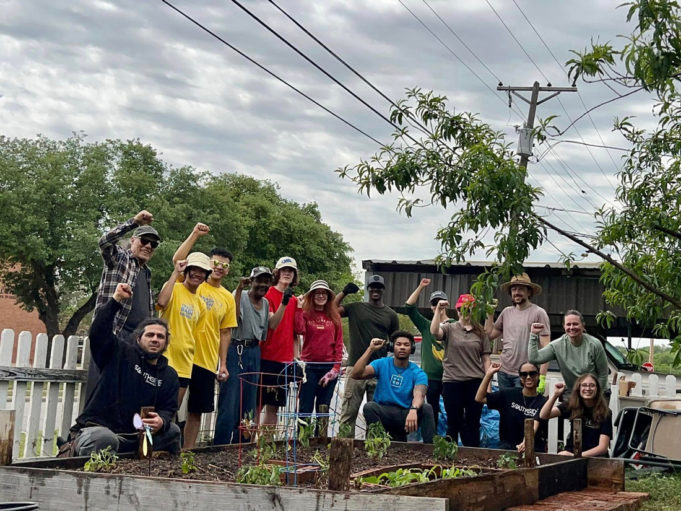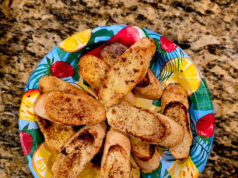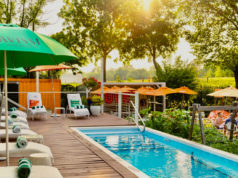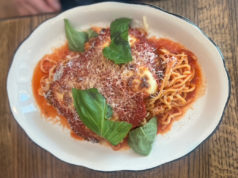In my Arlington neighborhood, there are six chain grocery stores. Three are walking distance from my house. But across Lake Arlington and up Highway 287, the number of grocery stores, pharmacies, and sidewalks in southeast Fort Worth, specifically in the 76104 ZIP code, dries up. It’s no coincidence that 76104 has the lowest life expectancy in Texas (more than 10 years below the state average), despite the fact that the bulk of our county’s hospital district and trendy West Magnolia Avenue lie within the boundaries.
A Walmart is situated close to the eastern border, near Cobb Park, and there are a couple of Fiesta supermarkets scattered north to south. There are Dollar Trees and Dollar Generals and package stores throughout the area, but if you want to cook a meal with fresh, minimally processed food, you’re going to have to travel. The same is true for the Polytechnic neighborhood, Historic Stop Six, and much of southeast Fort Worth.
Social justice advocates call this “food apartheid.” Considering the area’s median income, viable housing, and the tradition of violence at the hands of law enforcement, that term’s probably a lot more accurate than the more polite-sounding “food desert.” Fort Worth’s history is riddled with redlining — deliberately withholding services in areas with significant numbers of low-income and racial/ethnic minority residents. Redlining in Fort Worth today is still reflected in the dearth of neighborhood grocery stores — that Walmart on 287 is impractically far away from many of the Historic Southside, Stop Six, and other southeast neighborhoods. A current “Urban Village” project at Evans Avenue and Rosedale Street funded partly with city money granted to a Dallas-based development company has been in the works for almost four years, but there’s still no commitment to building a grocery store.
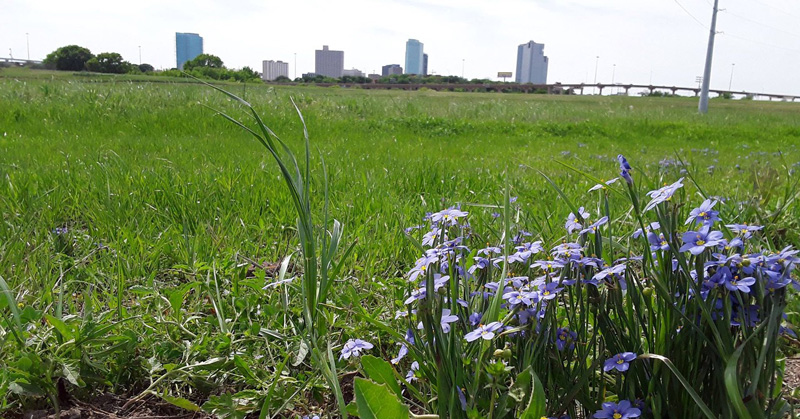
Courtesy Facebook
In 2016, the City of Fort Worth attempted to mitigate the lack of grocery options with an ordinance to encourage community gardens and urban farming. Citing the relationship between obesity-related health problems and lack of access to produce, the city felt that locally produced fruit and veggies grown in the areas of most dire need would eventually contribute health benefits in these communities. The ordinance doesn’t address the issues that contributed to the inequity in food distribution, but it formalized language about what constitutes a garden and protected legitimate gardens from the ire of code enforcement. Community gardens are defined as shared space for crops, run by nonprofit neighborhood associations or a community member, and open to the local neighborhood. There are no size limits on land plots, but accessory structures (like a shed to house tools and supplies) must be 400 square feet or less. The ordinance made it easier for homeowners to have frontyard produce gardens, which is important if your usable land is in front of, rather than in back of, your home.
At the time of this writing, there are five community gardens helping residents obtain low-cost or no-cost produce, including properties run by the Tarrant Area Food Bank and the UNT Health Science Center. Only Southside Community Garden (SouthsideFW.org) is based in 76104, and it’s the only nonprofit that puts raised garden beds in the yards of people who don’t have routine access to produce. The brainchild of co-founders Patrice Jones and Alison Pope, the organization with the help of garden manager Amy Meade aims to dent food injustice by teaching residents how to grow some of their own groceries. Southside Community Garden funds the raised beds and the crops and provides access to Meade, a master gardener, and other volunteers who coach the new gardeners through the basics. All a resident of 76104 needs is room for an 8-by-4-foot bed and the willingness to commit to a year of growing.
“It’s important that we realize food is medicine,” Jones said. A native of Hurst, she was shocked when she was coordinating volunteers painting the mural of Atatiana Jefferson, the Black woman murdered in her family home in the 76104 by former police officer Aaron Dean four years ago next month.
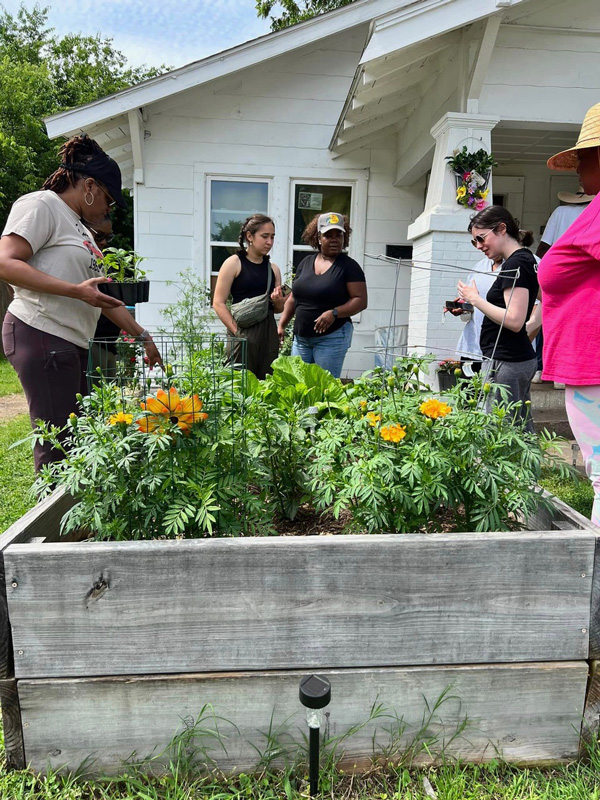
Courtesy Facebook
“There were no grocery stores or pharmacies,” she said. “I was amazed how far I had to go to get fruit and healthy snacks for the volunteers.”
It wasn’t always like this –– Langley’s Pharmacy and the office of legendary Black medical pioneer Dr. Marion “Jack” Brooks used to be hubs for health and wellness on Evans Avenue. While there’s a county public health building named for Dr. Brooks and county hospital clinics scattered through southeast Fort Worth, there are few other resources that measurably improve residents’ health and well-being.
“Interstate 35 was used to redline the east side from the west,” Jones correctly stated.
Today, the majority of resources in 76104 are located to the west side of the freeway, including the hospitals.
The 2016 ordinance also created space for urban farms –– public, private, and for- or nonprofit agricultural operations for planting and harvesting crops, raising fowl, or beekeeping –– and the sale of produce grown in these farms to the neighborhood. Over the last seven years, three urban gardens have filled the breach created by the lack of grocery stores and pharmacies willing (or incentivized, perhaps through tax breaks) to enter southeast Fort Worth neighborhoods.
Mind Your Garden Urban Farm (3815 Timberline Dr) was created by the husband-and-wife team of Ursula and Steven Nuñez, who purchased three acres in the Glencrest neighborhood in 2013 before urban gardening was actually a thing in Fort Worth. Steven has a degree in landscape architecture, and the couple’s commitment to producing alternatives to fast food and easy opportunities to buy liquor has become a sustainable farm in the primarily Hispanic neighborhood. And by changing the way that they ate –– more plant-based and with limits on the soul food particular to Mexican communities — both swear that they are healthier and feel more energetic in their 40s than they did in their 30s.
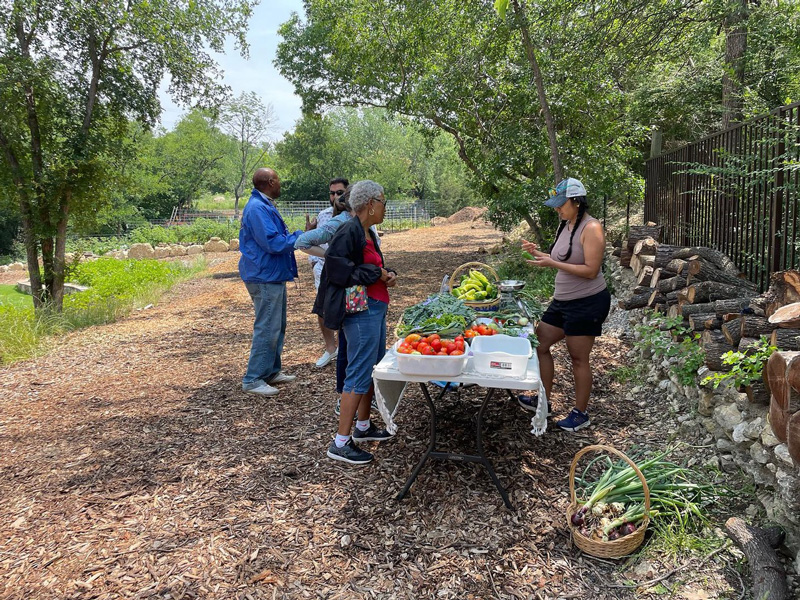
Courtesy Facebook
“Running a farm takes a lot of physical and mental strength,” the couple wrote earlier on their Facebook page. “The challenges our extended families face with their chronic health conditions was a wake-up call to do better and eat better.”
The Nuñezes host “Healthy Hours” in the garden when the weather’s not oppressively hot, and they’re in the process of offering formal how-to classes about starting, building, and maintaining a garden and how to cook with what you grow. They donate produce to the Blue Zones Feel Good Pantries at several area schools and will resume selling from a farm stand on the property once the summer heat abates.
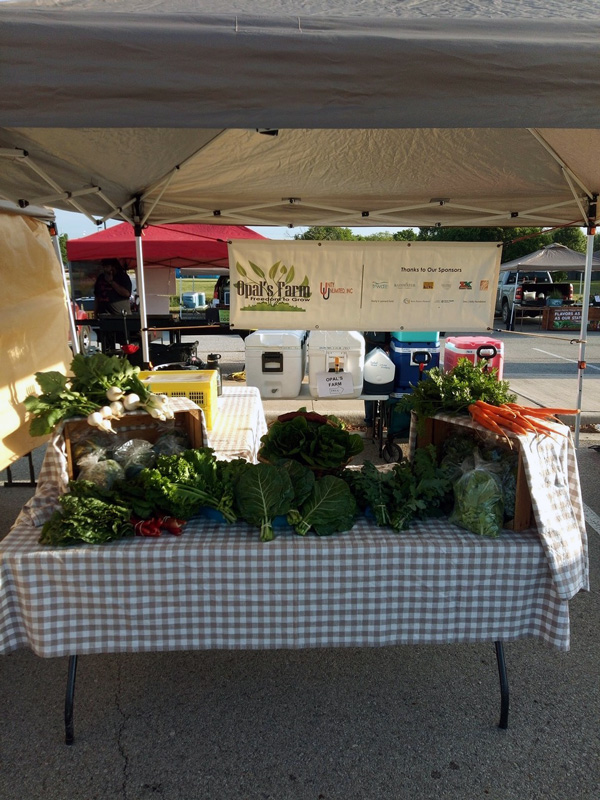
Courtesy Facebook
Opal’s Farm (2500 LaSalle St, 817-333-8367) is built on land deeded to Dr. Opal Lee, the grandmother of Juneteenth, for the purpose of feeding her urban community. Farm manager Gregory Joel is a committed lifetime believer in both the power of nutritious food and the power of charity. Joel said that the organization tithes 10% of crops to neighborhood organizations and plow the income from selling the rest of the produce to local restaurants and at Cowtown Farmers Market back into the earth — literally. Both Opal’s Farm and Mind Your Garden actively utilize food waste as compost material to refresh their soil and enrich plants without the use of chemicals. By utilizing “green waste,” urban farms help keep a substantial amount of bulk out of landfills.
Finally, Tabor Farms (3400 Village Creek Rd), the 3-acre urban farm located on land owned by Greater Mt. Tabor Christian Center, grew enough last year to have plenty to both sell and give away in the Stop Six area. Pastor Elvis Bowman envisioned the farm both providing sustenance to his neighbors and creating a training and education pipeline for his community. The church employs community members to run the garden, but, like the other urban farms, also relies heavily on community volunteers to do a lot of the heavy lifting during tilling and harvest time.
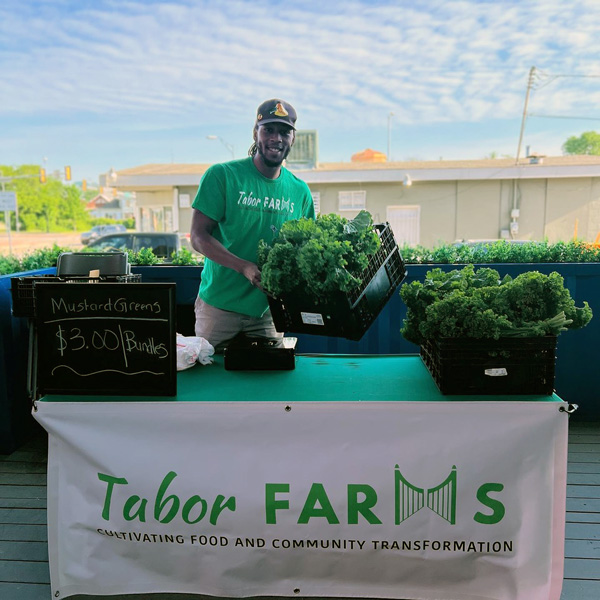
Courtesy Facebook
Wherever you live, the supply chain issues of 2020 should have made you realize that perhaps we all need to grow some produce. Emboldened by the work that urban and community gardens have done, and buoyed by both enthusiasm and naïve ignorance, my family and I attempted some raised beds at the beginning of summer. From May through July, there were plenty of tomatoes. The peas all died on the vines the minute the weather topped 90 degrees, and the carrots withered. Even the squash died, although Steven Nuñez said that Mind Your Garden wasn’t able to keep their squash going this year, either. The only thing standing as we approach fall is the okra. But I did notice that, for the two months we harvested vegetables daily, we actually ate more veggies. My limited experiment with suburban gardening wasn’t as labor-intensive as working a multi-acre urban farm, but it was rewarding. If you’re interested in helping the existing organizations make a dent in food insecurity, or if you want some tips to start your own garden, visit GrowSoutheastFW.wixsite.com/Texas or email info@southsidefw.org.



